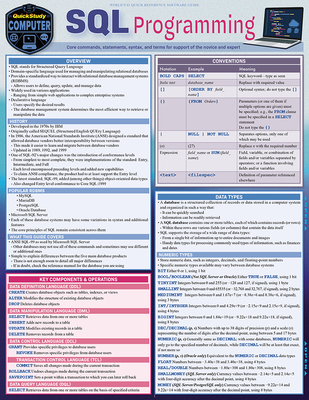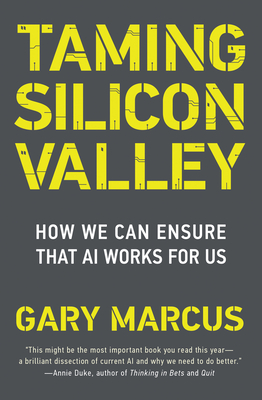Object Oriented Analysis and Design Using UML Training in Cheyenne
|
We offer private customized training for groups of 3 or more attendees.
|
||
Course Description |
||
| Learn how to use Object-Oriented techniques to analyze real-world
requirements and to design solutions that are ready to code. Students
learn how to identify and design objects, classes, and their
relationships to each other, which includes links, associations, and
inheritance. A strong emphasis is placed on diagram notation for use
cases, class and object representation, links and associations, and
object messages. This course utilizes UML 2.0 notation.
Course Length: 5 Days
Course Tuition: $2250 (US) |
||
Prerequisites |
|
| Familiarity with structured techniques such as functional decomposition is helpful. | |
Course Outline |
|
Introduction to OOAD
Intro: Fields of Study
Object Orientation Overview
Object Oriented Concepts
Stating the Case for Object Orientation
Labs: The OO Paradigm, Object Oriented Concepts
Unified Modeling Language (UML)
Unified Modeling Language Defined
Static Diagrams
Use Case, Class, Package, Component, Deployment
Dynamic Diagrams
Collaboration, Sequence, State Chart, Activity
Labs:Class Diagram, Collaboration/Sequence Diagram, State Diagram
The Software Development Process
Software Development Process Overview
Iterative Processes
Agile Processes
Unified Software Development Process
Phases
Iterations
Disciplines (Workflows)
Models
Use Case Driven, Architecture Centric, Iterative and Incremental
Labs: Civil Engineering vs. Software Development, Software Development Process, The Unified Process
The Inception Phase
Initial Planning
Business Modeling
Requirements Overview
Labs: Identifying Risks, Domain List, Vision Statement, System Context Diagram, Stakeholder Analysis
Introduction to Use Cases
Overview
Actors
Use Case Details
Create Initial Use Case Model
Labs: Initial Actor List, Discovering Use Cases, Initial Use Case Model
Additional Modeling
Domain Modeling
Discovering Your Types
Technology Modeling
Non-functional Requirements
Labs: Domain Model, Non-functional Requirements
Elaboration Phase
Initial Planning
Detailing Use Cases
Elaborating Use Cases
Refining Analysis Model
Labs: Architectural Use Cases, Detailing Use Cases, Elaborating Use Cases, Identify Analysis Classes
Elaboration - Design
Dynamic Modeling
Frameworks and Tiers
OO Design Principles
Labs:Collaboration Modeling Object Refinement
Introduction to Design Patterns
Introduction
Exploring a Simple Pattern - Iterator
Design Pattern Background
Labs:Examining Collection Traversal, Examining the Iterator Pattern
Design Patterns: A More Formal Approach
The Gang Of Four Description
The GOF Patterns
Labs:Discussing the GOF Patterns
Moving Deeper Into Patterns
Factory Method Pattern
Strategy Pattern
Decorator Pattern
Template Method Pattern
Labs:Using Factory Method, Using Strategy, Considering Decorator
|
Course Directory [training on all levels]
- .NET Classes
- Agile/Scrum Classes
- AI Classes
- Ajax Classes
- Android and iPhone Programming Classes
- Azure Classes
- Blaze Advisor Classes
- C Programming Classes
- C# Programming Classes
- C++ Programming Classes
- Cisco Classes
- Cloud Classes
- CompTIA Classes
- Crystal Reports Classes
- Data Classes
- Design Patterns Classes
- DevOps Classes
- Foundations of Web Design & Web Authoring Classes
- Git, Jira, Wicket, Gradle, Tableau Classes
- IBM Classes
- Java Programming Classes
- JBoss Administration Classes
- JUnit, TDD, CPTC, Web Penetration Classes
- Linux Unix Classes
- Machine Learning Classes
- Microsoft Classes
- Microsoft Development Classes
- Microsoft SQL Server Classes
- Microsoft Team Foundation Server Classes
- Microsoft Windows Server Classes
- Oracle, MySQL, Cassandra, Hadoop Database Classes
- Perl Programming Classes
- Python Programming Classes
- Ruby Programming Classes
- SAS Classes
- Security Classes
- SharePoint Classes
- SOA Classes
- Tcl, Awk, Bash, Shell Classes
- UML Classes
- VMWare Classes
- Web Development Classes
- Web Services Classes
- Weblogic Administration Classes
- XML Classes
- Introduction to Spring 6, Spring Boot 3, and Spring REST
15 December, 2025 - 19 December, 2025 - RED HAT ENTERPRISE LINUX SYSTEMS ADMIN II
8 December, 2025 - 11 December, 2025 - Python for Scientists
8 December, 2025 - 12 December, 2025 - Fast Track to Java 17 and OO Development
8 December, 2025 - 12 December, 2025 - See our complete public course listing
Scrum Uses & Stats
|
Difficulty
|
Popularity
|
Year Created 2001 |
|
Pros
Faster Deployment of Solutions
Gives Every Team Member a Purpose
Keeps the End Goal in Mind at Every Level
Promotes Flexibility in Order to Adapt
Faster Detection of Issues and Defects |
Cons
Can Act As a Band-Aid to Bigger Problems
Can Create a Micro-Managed Environment
Not Everyone Is On Board
Push for Higher Performance
Not Well-Suited for Every Project |
| Scrum Job Market |

Average Salary
|

Job Count
|

Top Job Locations
Agile and SCRUM methodologies are practiced mostly in larger organizations that have cross-platform teams that need to be on the same page. Adoption rates vary in different industries.
Industry Agile Adoption Rate Software (ISV) 23 percent Financial services 14 percent Professional services 12 percent Insurance 6 percent Healthcare 6 percent Government 5 percent Telecoms 4 percent Transportation 4 percent Manufacturing 4 percent |
|
Complimentary Skills to have along with Scrum
Agile Methodologies and Frameworks include: ASD - DevOps - DAD - DSDM - FDD - IID - Kanban - Lean - SD - LeSS - MDD - MSF - PSP - RAD - RUP - SAFe - Scrum SEMAT TSP UP XP The Standards and Bodies of Knowledge Include: BABOK - CMMI - IEEE standards - ISO 9001 - ISO/IEC standards - PMBOK - SWEBOK - ITIL |






